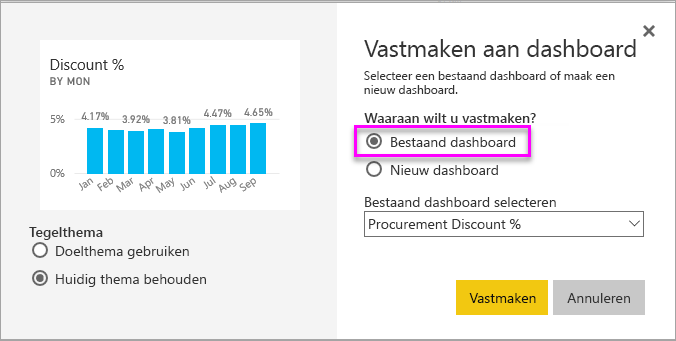

This is where you identify the sources of data for the information you want to display in the report/dashboard. The diagram below shows a typical process for creating Power BI reports and dashboards. To create a dashboard, you therefore need to create the underlying reports in the Power BI Desktop app. Each of the visualizations that you see on a Power BI dashboard is a tile that is pinned from a Power BI report.
#Power bi desktop dashboard software#
The Power BI service is the SaaS ( Software as a Service) part of Power BI. Overview on Creating Power BI Reports and Dashboardsĭashboards are created by designers using the Power BI service (also known as Power BI online). In the remainder of this article, we’ll use the term ‘dashboard’ to refer to a Power BI dashboard or a one-page Power BI report. In this case, no interaction is needed, and so a Power BI dashboard would be appropriate. For example, your CEO may want a dashboard showing 5 or 6 important KPIs across the business on a big screen in the office to provide up-to-date feedback on performance and generate motivation. One final consideration when choosing between a dashboard and a report is to think about where it will be displayed and whether any interaction is needed. Of course, if multiple datasets need to be referenced, then a dashboard is the best solution.Ī good way to think about reports vs dashboards is an organization with multiple departments – each department could have a one-page Power BI report as their ‘dashboard’, whilst the CEO could have a Power BI dashboard that shows a handful of KPIs across all the departments. It is made from visualizations in Power BI ReportsĪ Power BI report has the following key characteristics:ĭue to some of the limitations of the Power BI dashboard entity (no filtering/slicing is a big one), designers will often build one-page Power BI reports and use these as ‘dashboards’ (to the end-user, there really is no difference).It can have multiple visualizations from multiple data sources.

So, a Power BI dashboard has the following key characteristics:

Can export data but can’t see tables and fields in the dashboard itself. Many different ways to filter, highlight, and slice.Ĭan see underlying dataset tables and fields Can filter a dashboard tile in focus mode, but can’t save the filter. Only if you pin an entire report page to a dashboard. One or more reports and one or more datasets per dashboard. They both display visualizations on a canvas, but when should you use reports and when should you use dashboards? There are some key differences in the functionality of each which you need to consider when designing a solution. The difference between them can be confusing to new Power BI users. In Power BI, reports and dashboards are two distinct entities that are used together to meet your data visualization needs. Reports, meanwhile, give more detailed information and allow users to dig a little deeper to identify trends or anomalies, usually through filters. It helps answer fundamental questions like “How is my business/department/team/project doing?”. What are Power BI Dashboards and Reports?Ī dashboard provides a single page at-a-glance view of business metrics and KPIs (Key Performance indicators). We’ll cover both these areas in this article. There are also some tips and tricks to get the most out of your dashboards.
#Power bi desktop dashboard how to#
Although the Power BI suite provides great flexibility in terms of how to get data and process it, there are still some defined steps that need to be followed. However, not every user can jump in and start creating amazing reports and dashboards from day one. If you are a Microsoft shop, Power BI is a no-brainer for your BI needs. Power BI is relatively simple to use and with hooks into everybody’s favorite app, Excel, Microsoft is pitching it as a self-service option for general users to create their own reports and dashboards. Microsoft is deliberately targeting Power BI at a wider audience than just BI Developers or Data Analysts. Although it is more of a collection of applications and services, as opposed to a single app, the whole Power BI experience is now well integrated and intuitive to use. It was originally bundled with SQL Server, and portions of it evolved from Excel add-ins such as Power Query, Power Pivot, and Power View. Power BI is Microsoft’s business intelligence (BI) platform and is built on some solid foundations. Power BI Use Cases with 3 Dashboard ExamplesĪn Introduction to Power BI What is Power BI?.


 0 kommentar(er)
0 kommentar(er)
